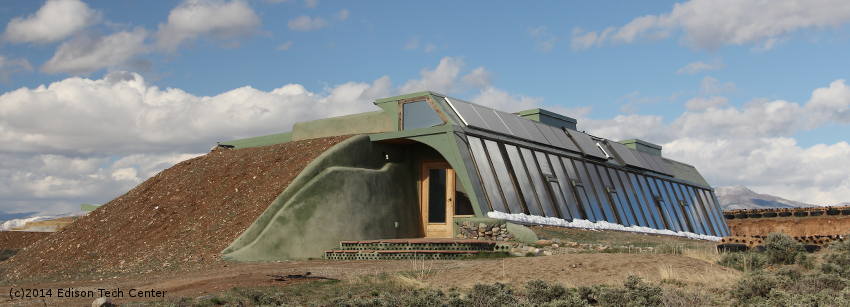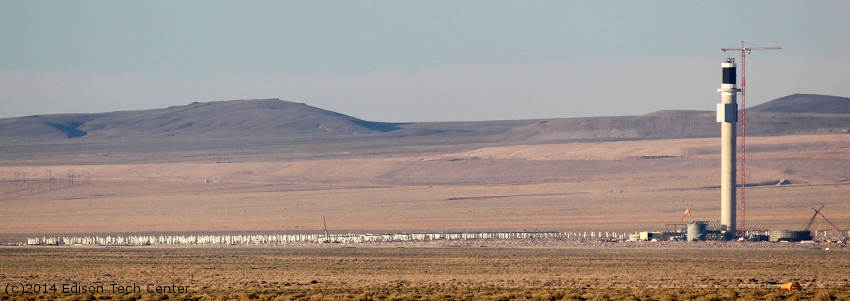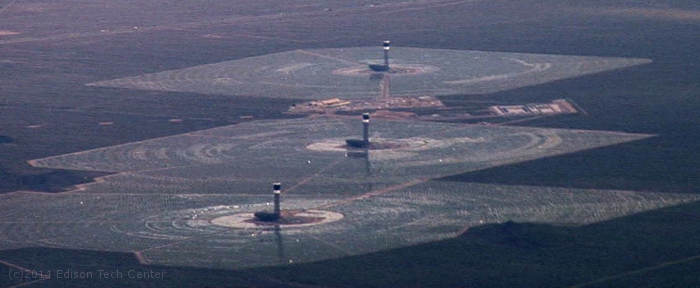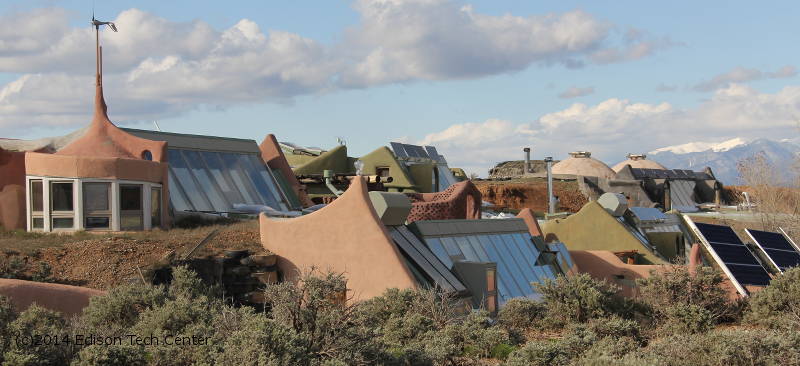Passive Solar Power and CSP (Concentrated Solar Power)

Passive solar design and CSP are quite different from each other but both use the heat of the sun to accomplish energy needs. This is different than photovoltaic which uses semiconductors to convert the sun's rays directly into electricity.
1.) Concentrated Solar Power
2.) Passive Solar Design
1.) Concentrated Solar Power:

Above: 160 meter high tower at Crescent Dunes Solar Energy Project (Tonopah, NV). It uses molten salt and will generate 110 megawatts of electricity.
CSP can be configured in several ways, but all forms use mirrors to focus the sun's rays onto a liquid which creates steam and pressure. The steam drives steam turbines and makes electricity.
One form of CSP uses a field of mirrors which thanks to precise mathematics are aligned by computer at an optimum angle with the sun to direct solar power onto a tower. A black area on the tower absorbs the energy and behind the black area is an array of pipes which carry either molten sodium or water.
Mirrors:
The mirrors used in CSP can either be nearly flat, or parabolic. The parabolic
mirrors have a pipe in the center where liquid is pumped through. See more about parabolic
mirrors at the SkyFuel website. Their SkyTrough trough solar concentrator is a perfect
example of this kind of technology.

Above: The Ivanpah Solar Power Facility in California uses hot water. Funding for the project has come from a variety of sources including Google.
2.) Passive solar design in buildings:
Passive solar technology uses the heat of the sun and building/material design to provide internal and water heating without the use of electricity or combustion. Buildings designed with passive solar heating can stay warm in the winter and cool in the summer by use of proper orientation, devices and materials. Passive solar is different than active solar in that active solar uses electrical and mechanical devices. Designing passive solar systems is the realm of engineers with heat transfer, architecture and materials engineering backgrounds.
Below: a community of passive solar homes in Taos, New Mexico (Earthship Biotecture)

Understanding thermal properties of materials is important as the correct choice of materials allows for slowing/hastening temperature changes when desired. Mirrors can be used to capture energy and focus it in a solar furnace and solar forge.
In buildings chimneys, doors, ventilation systems and windows are all designed to control temperature based on the local climate, latitude, humidity and wind patterns.
See the video below where the Edison Tech Center takes a tour of a passive solar house in a special community in New Mexico. This style of passive solar house has been branded "Earthship"by designer Mike Reynolds.
Further Reading:
Mojave Mirrors: World's Largest Solar Plant Ready to Shine
Ivanpah Solar Electric Generating System
Related Topics:
|
All types of Electric Motors |
Photovoltaic (Solar Power) |
Electric Cars |
Wind Turbines |
Diesel Electric Locomotives |
Dynamos and Generators |
Sources:
Interview with James Duggan. Edison Tech Center 2009
Earthship Architecture video. Edison Tech Center 2014
Wikipedia
passivesolar.sustainablesources.com
Solar Reserve.com
Wallstreet Journal
Photos/Video:
Edison Tech Center

